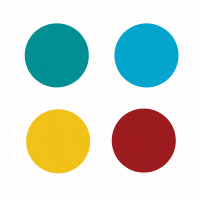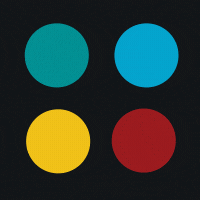




Websites are the virtual face of any organization, startup or reputed company. And these websites/applications create an impact on the web and establish a company’s ‘web presence’ in the market. A solid web presence attracts global customers to your site and creates more avenues for business. The goal of modern-day companies is to build technically complex yet user-friendly websites. Feature-rich, intuitive and futuristic websites are the easiest way to convince more customers → improved sales and → higher revenue. And web development frameworks play a big role in this whole process. Here we discuss some popular web development frameworks to use.
Basically, a web development framework provides the necessary structure to build a website. It is a software platform that combines application templates, pre-written components and essential code snippets for ease of site-building. The primary goal of the framework is to simplify the task of web developers by minimizing the chances of errors. Also, as templates are readily available, it saves time to create things from scratch.
The major benefits of a web development framework are
Categorically speaking, there are,
Front-end frameworks that deal with the presentation part of the website. These are used to build visual components and user interfaces. Also known as client-side frameworks, these deal with creating UI/UX, SEO optimization and more. These are used to build the part that directly interacts with the users and engages them. Angular, React, Vue, and jQuery are some of the most popular front-end frameworks.
Back-end frameworks focus on the background processing tasks like fetching, storing and reproducing data. These involve complex responsibilities like database management, scalability, security, server configuration and more. Django, Laravel, Rails, and Spring are top back-end frameworks used for websites.
Let’s classify,
To build a website, you must know the architecture of a web development framework. A study of the architecture helps web developers to know the interconnection between the various components and layers of the framework. This helps to simplify complex concepts and create more interactive websites.
The MVC architecture is a popular choice when people want to segregate the data models from the user interface. The benefit of MVC is that it permits code reuse and facilitates web development through a modularized approach.
In this architecture, the control is given to the View layer. This layer converts data objects into simplified components. It basically creates a binding between different layers and supports a resolution of user requests.
Push and Pull are terms used as per the relation between View and Controller in the MVC architecture. In the Push-based model, the controller pushes data to the View layer as per the request made by the user. In the Pull-based model, the View layer gathers data from different components of the controller and displays it as the output. Therefore, it is called Pull based architecture.
This type of architecture is a blend of three physical layers – the presentation layer or UI, the application layer or data processing tier and the data layer which stores and manages data. It usually uses a relational database.

One of the most favourite web development frameworks, Django, is primarily written in Python and also has JavaScript codes. It offers security, scalability, high performance and more. Perfectly suitable for layered, large websites that can be scaled in the future. Web developers like it as it helps in quick application development. Based on ‘Convention over Configuration and DRY patterns’, it is for those who want a highly secure website. Instagram, Google and YouTube are some of the most renowned platforms that use Django. It has more than 58,390 websites to its credit.
An open-source framework that boosts the performance of Node.js, this one is apt to create high-performing applications. Written in JavaScript, the architecture of Express is good enough to build complex, enterprise-level applications. The minimal architecture is apt for beginners. It is famed for offering scalable, feature-rich websites and apps. With more than 1,886,981 websites to its credit, Express is a top choice as a backend development framework. Popular names like IBM, Accenture and Uber use Express for their projects.
Released in 2004 and written in Ruby, Rails is one of the most versatile backend frameworks. Preferred by companies like Airbnb, Shopify and Hulu, this offers scalable and rapidly developed applications. With a plethora of libraries, tools and packages, Rails is a perfect fit to design cloud-based web applications. It is ideal for creating robust websites for any sector. It has more than 4,000,000 web applications to its credit.
Written in PHP, this backend framework is quite popular for offering numerous packages, and unseen functionality. Based on the MVC model, this one is still younger than its contemporaries. Easy to blend with any front-end technology, Laravel is best for beginners. It comes a close second when compared with the performance of Django and Express. With more than 1500000 websites to its name, this one is a favourite back-end framework.
Best framework for Java-based applications, this one works well for developing enterprise applications. It is a lightweight, small-sized framework that supports quick web development. Companies like MIT, and Zillow are using Spring to create rock-solid websites. It has around 14,000+ websites under its badge.

More commonly used to develop apps and component-based applications, React is a top front-end development framework. It has a huge library that facilitates quick web development and is the backbone for creating stunning web applications. It can be used on both, the client and server sides, i.e. front-end and back-end sides. Likewise, it is best to create custom app components that can be further divided into smaller chunks. Virtual DOM prevents any downtime, making the site high performing under every traffic condition. Written in JavaScript and supported by Facebook engineers, ReactJS is one of the most chosen front-end frameworks. It has more than 10,418,000 websites to its credit.
Written in TypeScript and relaunched in 2016, Angular is an open-source framework suitable for large-scale enterprise applications. With a two-way data binding approach and lots of tools and packages, this front-end framework is best for creating cross-platform applications. Its large size hampers the performance of the site, but considering the very many benefits, Angular is a favourite amongst UI developers. It has more than 300,000 websites as of now.
Simpler than Angular and lighter than React, Vue is an open-source framework with good support from the community. It is best for creating Progressive Web Apps and SPAs in much lesser time than other frameworks. With a two-way data flow capacity and ready-to-integrate components, Vue offers much more flexibility and minimizes development time and cost. As of now, it has contributed to the development of 3,409,825 websites.
Ember offers the much-needed speed for designing user interfaces in a jiffy. It works on the principles of Convention Over Configuration and DRY patterns. It offers manifold unseen features, add-ons and CLI tools to create stunning UIs. With backward compatibility, it offers stability across all its versions. It is used by tech giants like Google, Microsoft and Netflix. Again a popular choice, it has around 134,000 websites as of now.
Written in JavaScript, this one has a simple, easy-to-understand architecture. It is best for building secure, cross-platform web applications. It offers numerous external packages and add-ons to create interactive web apps. Furthermore, it blends markup technologies like CSS and Ajax to create dynamic websites that engage users. Furthermore, it is best to fit to add visual elements and animations to websites. It has a gigantic count of 69,193,395 websites to its credit.
These are many other useful web frameworks used by software developers to create spectacular websites with exceptional backend systems. Which one to use is a question that can be answered based on the requirements, timeframe, budget and complexity of the project. Now, you can pick and choose the suitable web development framework to convert your concept into a fully-fledged website.
KrishaWeb is one of the best web development companies that offer all kinds of websites, starting from Startups to enterprises. Discuss your business idea with our team to get a custom-made, foolproof and affordable web solution. Feel free to connect with us for more details!!
Subscribe to our newsletter and learn about the latest digital trends.